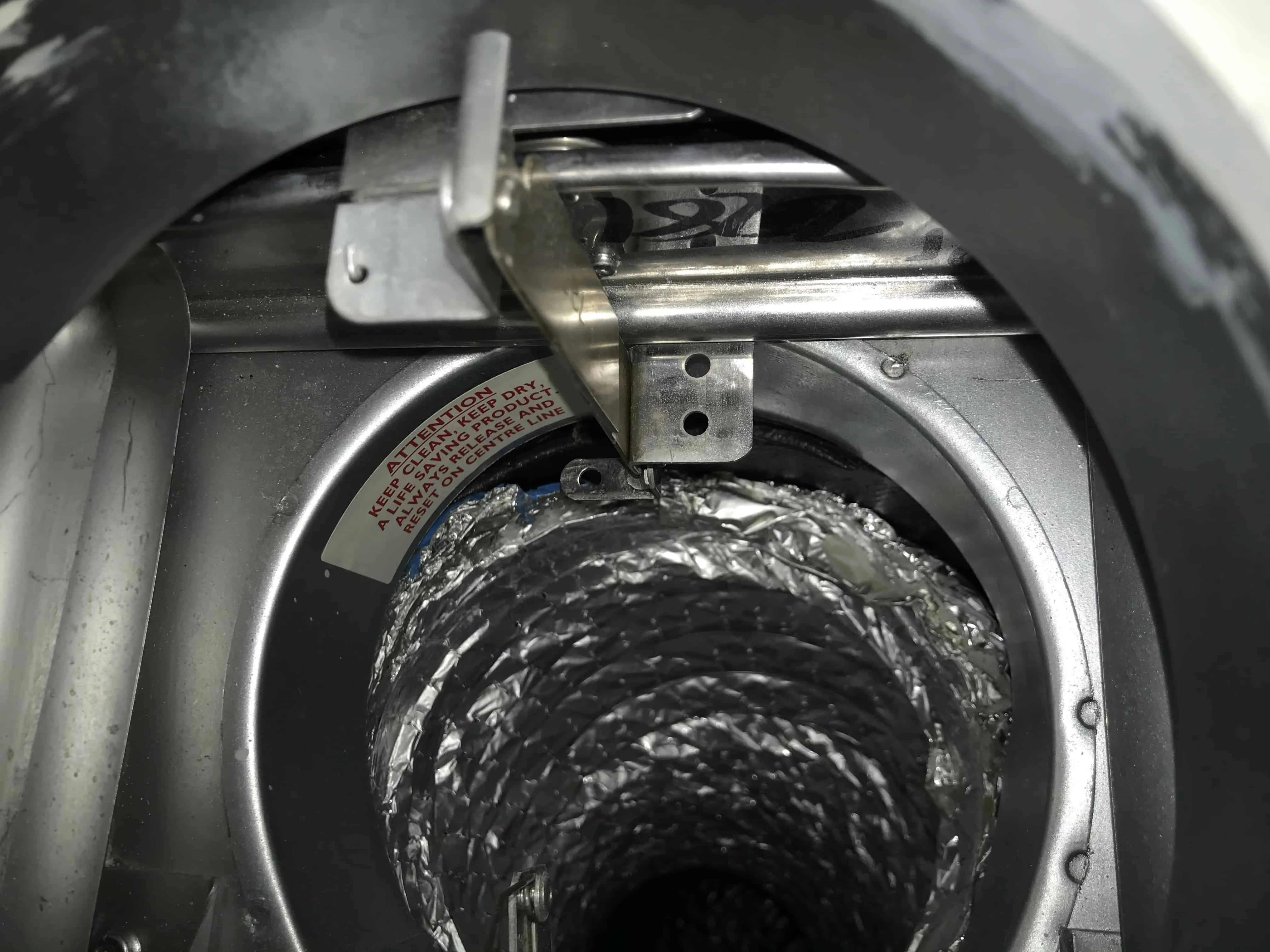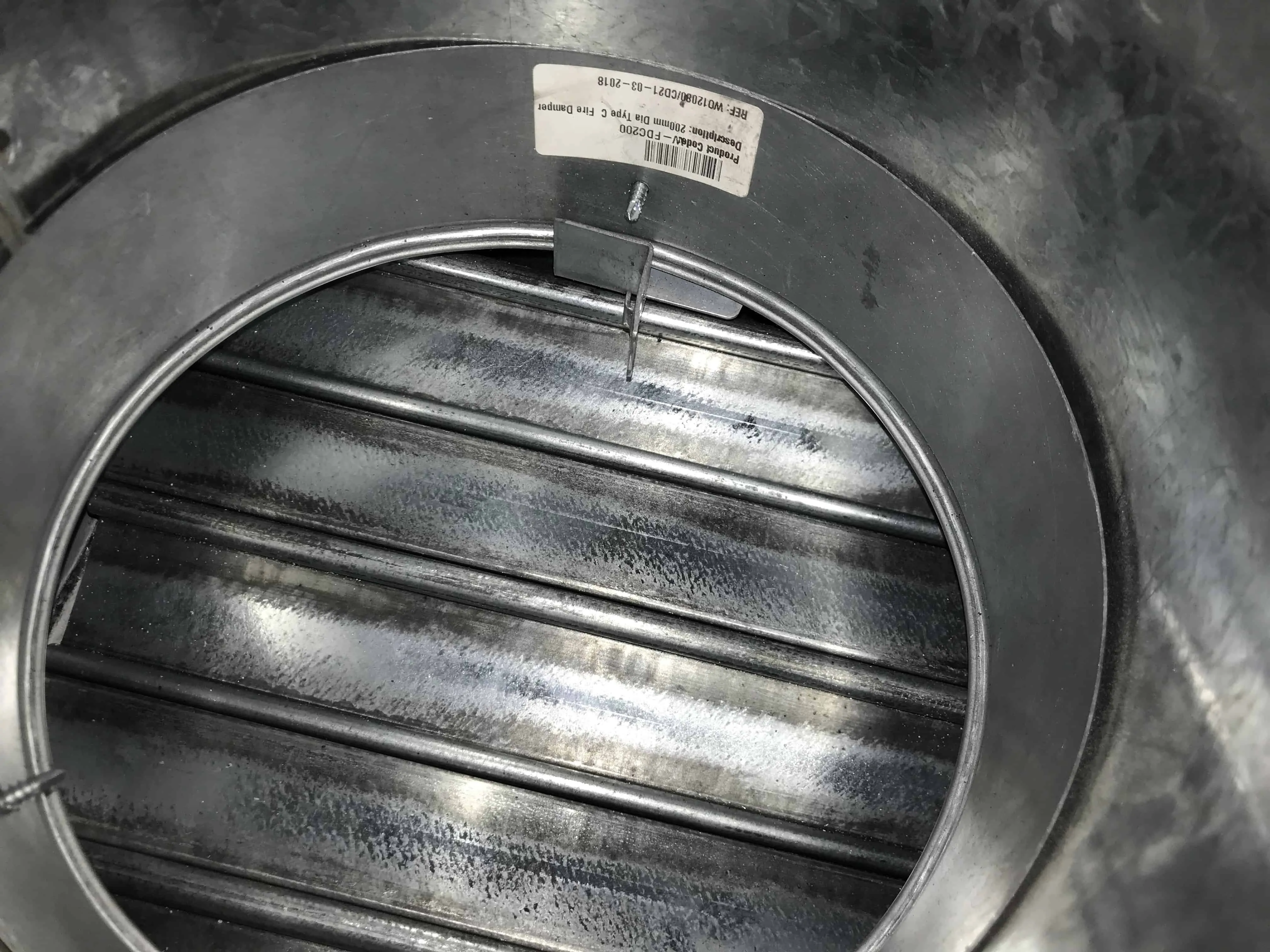09 Oct Fire Damper Drop Testing
The Importance of Fire Damper Drop Testing
If your commercial building has ductwork, it will also be equipped with fire dampers that are a crucial component of your building’s safety features. But what exactly are the requirements for fire damper testing in the UK? Let’s find out now.
What is a Fire Damper?
A fire damper is a passive fire protection product, which is a crucial component of any commercial building’s fire safety equipment. They are installed within the ductwork of a building and are conditioned to shut automatically when they detect smoke and flames. When installed and maintained correctly, fire dampers slow the spread of fire through a building, allowing people sufficient time to exit safely.
How do Fire Dampers Work?
When fire or smoke is present in your ductwork, your fire damper will be activated either thermally or electrically. It will slam shut and act as an additional barrier for the smoke and flames to pass through. Ultimately, this slows the spread of fire and is an essential fire safety component of any commercial building.
What is a Fire Damper Drop Test?
Most fire dampers are held together by a fusible link, which is what is triggered when smoke or fire is detected, causing the damper to slam shut. A fire damper drop test sees one of our experts manually release the fire damper and check that it closes sufficiently. This check ensures that your damper will work when called upon in a case of fire.
Why do You Need to Test a Fire Damper?
Not only is testing a fire damper best practice, but it is also a legal requirement in the United Kingdom. By law, you need to test your fire damper at least once a year after installation and keep the report as part of your building’s fire safety records.
Fire Damper Testing Requirements
The legal fire damper testing requirements are laid out in NFPA 80. It is a legal requirement to test a fire damper upon installation and then again one year later. Thereafter, you must arrange for your fire dampers to be tested at four-year intervals. Hospitals are only required to test fire dampers every six years.
Resetting a Fire Damper
Most fire dampers automatically reset if a nuisance alarm occurs and the entire system is reset as a result. You can also manually reset a fire damper by pressing the reset button, which tends to be located on its assembly. You can always get in touch with us if you have any questions about resetting your fire damper.
Cleaning Fire Dampers
At Deduct, we specialise in providing a comprehensive cleaning of your building’s fire dampers. This includes removing any dirt and debris that has accumulated over time while ensuring that your fire dampers can operate sufficiently in fire conditions. We clean fire dampers while carrying out an inspection.
How Often Should You Conduct Fire Damper Testing?
According to government guidelines, you must conduct fire damper testing one year after installation and every four years after that. However, to be on the safe side, we advise you to conduct fire damper testing annually to ensure your building is as safe as possible. Additionally, considering the importance of maintaining a safe and clean environment, it’s also recommended to schedule regular duct cleaning to prevent potential fire hazards and ensure optimal performance of your HVAC systems.
What Happens After Fire Damper Testing?
After we’ve conducted fire damper testing at your property, we provide you with a comprehensive report outlining the testing that has been carried out, which you can attach to your records.
Want To Learn More About Our Fire Damper Drop Testing?
To schedule your fire damper testing with Deduct, call us today on 0333 772 0089.


